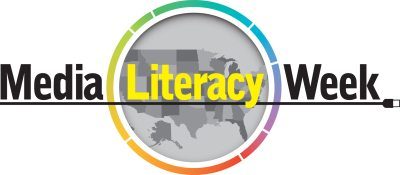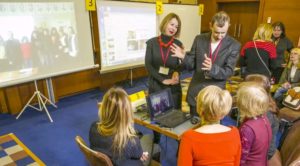
With Fake News, Knowledge is Power – The Case for Media Literacy
This past week has seen media giants Facebook, Google, and Twitter testify in front of Congress about Russian ads purchased on their platforms. Their testimony is the latest installment of the fake news saga that’s been dominating the national dialogue and stymieing American lawmakers. Banning foreign news outlets could be seen as an attack on freedom of speech and play right into the Russians’ hand, while a lack of action could leave the US vulnerable to further foreign influence.
The key to winning the propaganda battle starts on a personal level. A curriculum to teach students (and adults) how to evaluate online sources is our best bet for fighting foreign propaganda. And given that this week is US Media Literacy Week, now is the perfect time to talk about it.
Around 40% of Americans get their information from social media or online sources. That number jumps to 50% for people under 50. The shift to online news can be dangerous – unlike a print newspaper, there are very few barriers to participation on the internet. Information from a tweet can be shared across thousands of networks within minutes, and most netizens lack the knowledge or the desire to fact check before retweeting. That’s where media literacy comes in.
The term media literacy broadly refers to the ability to analyze and evaluate any media sources. This article will focus on news literacy, a subset of media literacy. Oftentimes, it’s mistakenly assumed that because the younger generation was raised with the internet, they know how to navigate it. A recent Stanford study concluded the opposite. The study, which spanned 15 states and included nearly 8,000 students, found that majorities of middle schoolers, high schoolers, and college students lacked the ability to discern fake news from real news.
In the US, there are myriad organizations that focus on the issue of media literacy. One of the most prominent is the National Association of Media Literacy Education (NAMLE), the organization behind US Media Literacy Week. The organization has been advocating for media literacy since the 90s, but since the 2016 elections, it’s been getting a lot more attention. NAMLE partners with local schools and teachers to implement curriculum that focuses on source evaluation and gives students the tools they need to navigate the changing media environment.
However, there are some challenges to implementing media literacy programs across the US. Education is an issue largely left to the states, so it’s much more difficult to pass a sweeping media literacy law. There’s currently active legislation in 12 states concerning media literacy, and NAMLE is working with lawmakers to do more. Even so, progress has been slow.
Another challenge for media literacy advocates is the lack of research. When I spoke to Michelle Ciulla Lipkin, Executive Director of NAMLE, over the phone, she told me that although there are large amounts of anecdotal evidence, the field still lacks research and assessment.
More research would help fine tune the methods used for media literacy education. Fortunately, the limited research that does exist on this topic shows reason for optimism. A 2016 study published in the American Educational Research Journal found that students exposed to media literacy training showed a “large, statistically significant difference” in their ability to evaluate the accuracy of a source, compared to students who had no exposure to media literacy training.

Photo from a Learn2Discern training session
Other countries have also been using media literacy to fight against Russian disinformation. One of the best examples is the Learn2Discern program in Ukraine, a training methodology program that uses interactive modules to teach citizens about media. Learn2Discern was able to provide concrete statistics that showed that the program was working. The program observed a 24% increase in participants’ ability to distinguish trustworthy news from fake news, a 22% increase in those who cross-check the information in the news they consume, and a 26% increase in participants’ confidence in analyzing news.
Coupled with other measures to limit foreign media influence (such as forcing RT to register as a foreign agent), media literacy provides a good path forward. The media literacy approach allows the US to avoid impinging on freedom of the press, while simultaneously creating a greater demand for accurate news sources. This long-term solution would aid national security by making the US less likely to fall victim to foreign propaganda and influence.





